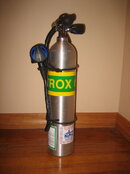I owned a Spareair for 3 years and recently sold it and bought a pony due to the reasons already mentioned - 3 cu ft doesn't provide sufficient air and the Spareair's delivery rate is questionable for some scenarios that may happen on my dives. I've read some threads that say some Spareairs leak. Forunately, mine was good and held a full tank for the last 1 year I owned it without needing a re-charge.
If your question is do you need it? I suppose it depends on what kind of diving you do (how deep, diving conditions) and what kind of diver you are (air consumption under stress, are you prone to panic etc). For me, I don't thnk it offers a sufficient margin of safety for my dives at 45 ft or deeper, if my reg experiences a catastrophic failure. Also, I've found it breathes very wet at all depths and breathing becomes harder below 30ft. Is it better than having no redundancy? Perhaps, since every gulp of air underwater can mean the difference between life and death. But for a little more money, you can get a 13 or 19 cu ft pony tank (> 4 times more air) and decent regulator (which definitely breathes better). And carrying ponies aren't much more of a hassle than Spareairs. For these reasons, I went with a pony.
Dive safely.
If your question is do you need it? I suppose it depends on what kind of diving you do (how deep, diving conditions) and what kind of diver you are (air consumption under stress, are you prone to panic etc). For me, I don't thnk it offers a sufficient margin of safety for my dives at 45 ft or deeper, if my reg experiences a catastrophic failure. Also, I've found it breathes very wet at all depths and breathing becomes harder below 30ft. Is it better than having no redundancy? Perhaps, since every gulp of air underwater can mean the difference between life and death. But for a little more money, you can get a 13 or 19 cu ft pony tank (> 4 times more air) and decent regulator (which definitely breathes better). And carrying ponies aren't much more of a hassle than Spareairs. For these reasons, I went with a pony.
Dive safely.




